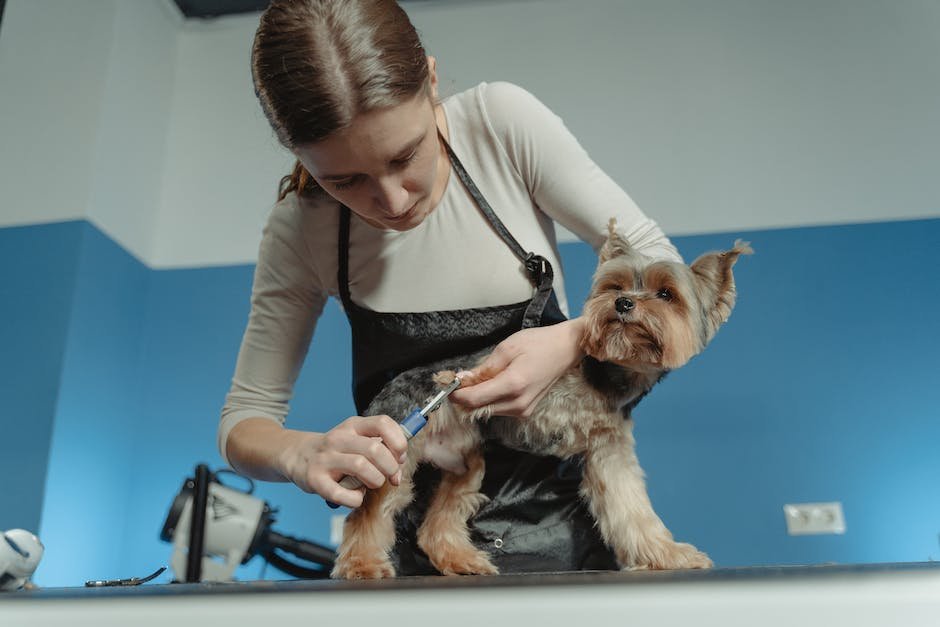In a world where connection and understanding can sometimes be a challenge, a dedicated group of four-legged heroes emerges as companions and guides for individuals with autism. Autism service dogs, with their remarkable ability to comprehend and cater to the unique needs of their human counterparts, have revolutionized the way we approach autism spectrum disorder (ASD) support. These exceptional canines are not your typical pets; they undergo specialized training techniques designed to transform them into compassionate, reliable, and indispensable partners. Join us as we delve into the enlightening world of autism service dogs and explore the intricate methods that enable them to enhance the lives of those living with autism.
Table of Contents
- Understanding Autism Service Dogs
- Unique Training Techniques for Autism Service Dogs
- The Role of Bonding and Relationship-building in Autism Service Dog Training
- Effective Strategies for Teaching Autism Service Dogs Social Skills
- Tailoring Training Techniques to Meet the Individual Needs of Autistic Individuals
- Q&A
- Key Takeaways

Understanding Autism Service Dogs
Autism service dogs play a remarkable role in the lives of individuals living with autism spectrum disorder (ASD). These specially trained dogs offer a wide range of support, assisting individuals with ASD in their daily routines, emotional well-being, and overall independence.
What sets autism service dogs apart is their ability to provide a calming presence and aid in reducing anxiety. They are trained to detect and respond to sensory overloads, offering comfort and helping prevent meltdowns. These dogs can also assist with behavior interruption, helping individuals redirect their focus and maintain composure in overwhelming situations.
Furthermore, autism service dogs help improve social interaction and sensory skills for individuals with ASD. They can be trained to prompt and encourage social engagement, assist in teaching reciprocal play, and aid in overcoming challenges related to social communication. Their presence can boost confidence and provide a reliable companion for individuals as they navigate various environments, providing a bridge to greater independence and integration.

Unique Training Techniques for Autism Service Dogs
Preparing an autism service dog to provide the necessary support and companionship requires specialized training techniques that focus on enhancing specific skills and building a strong bond between the dog and the individual with autism. These innovative techniques go beyond traditional obedience training, providing the dogs with unique tools to meet the unique needs of their human counterparts.
1. Sensory Integration: Autism service dogs are trained to assist with sensory integration by introducing them to various textures, sounds, and smells that individuals with autism may struggle with. Through gradual exposure and positive reinforcement, the dogs develop the ability to provide comfort and reassurance in overwhelming sensory environments.
2. Socialization and Public Access Training: To ensure that autism service dogs are well-prepared for public settings, extensive socialization and public access training are essential. This includes exposing the dogs to different environments, teaching them appropriate behavior in crowded or noisy places, and familiarizing them with public transportation, shopping centers, and other daily scenarios.
3. Task Training: One of the key aspects of training autism service dogs is to teach them specific tasks that can assist individuals with autism in their daily lives. This may include teaching the dog to interrupt repetitive behaviors, provide deep pressure therapy, alert to safety concerns, or act as an anchor during moments of distress. By focusing on individual needs, each dog is trained to provide personalized support to their human companion.

The Role of Bonding and Relationship-building in Autism Service Dog Training
When it comes to autism service dog training, the role of bonding and relationship-building cannot be overstated. These furry companions play a vital role in the lives of individuals with autism, providing comfort, support, and assistance in navigating the world.
Building a strong bond between the service dog and the person with autism is crucial to ensure effective communication, trust, and understanding. This bond begins during the initial stages of training, where the focus is on establishing a connection based on mutual respect and empathy.
During training sessions, trainers emphasize the importance of positive reinforcement and rewards to strengthen the relationship further. Using treats, praise, and play, the bond between the service dog and the individual with autism deepens, fostering a sense of companionship and companionship.
Moreover, relationship-building extends beyond the training sessions. It involves daily interactions, such as grooming, feeding, and spending quality time together. These activities create opportunities for both the dog and the individual to understand each other’s needs and preferences, leading to a harmonious partnership.
Ultimately, is to create an unbreakable bond that empowers individuals with autism, providing them with the support and companionship they need to thrive in a world that may otherwise feel overwhelming.

Effective Strategies for Teaching Autism Service Dogs Social Skills
Teaching social skills to autism service dogs requires a thoughtful approach and a range of effective strategies. Here are some valuable techniques that can be employed to ensure the dogs develop the necessary social abilities:
- Exposure to various social settings: Introducing the service dogs to a wide range of social environments, such as crowded public places, parks, and schools, helps them adapt and thrive in different situations. This exposure allows them to become accustomed to diverse sensory stimuli and teaches them how to behave appropriately in different social contexts.
- Positive reinforcement: Using positive reinforcement is essential in teaching social skills to autism service dogs. Rewarding desired behavior with treats, praise, or playtime helps them associate positive experiences with appropriate social interactions, encouraging them to repeat those behaviors in the future.
- Structured socialization exercises: Incorporating structured socialization exercises into the service dog’s training routine is crucial for their social development. These exercises can include supervised playdates with children or adults, role-playing situations, and obedience training in group settings.
- Working with a professional trainer: Collaborating with a professional dog trainer experienced in working with autism service dogs can greatly enhance the effectiveness of social skills training. These trainers can provide expert guidance, tailor exercises to specific needs, and offer valuable insights into the dog’s progress.
By implementing these effective strategies, autism service dogs can develop the necessary social skills to provide optimal support and companionship to individuals with autism.
Tailoring Training Techniques to Meet the Individual Needs of Autistic Individuals
When it comes to providing effective learning experiences for autistic individuals, a one-size-fits-all approach simply doesn’t work. Every individual is unique, with their own set of strengths, challenges, and learning styles. That’s why it’s crucial to tailor training techniques to meet their specific needs.
One effective way to do this is by incorporating visual supports into the learning environment. Visual aids such as schedules, social stories, and visual cues can help individuals with autism better understand and navigate their surroundings. These supports provide a clear structure and visual representation of what is expected, reducing anxiety and promoting independence.
- Using visual schedules to outline daily activities and transitions.
- Creating social stories to teach social skills and appropriate behavior in various situations.
- Using visual cues or symbols to facilitate communication and understanding.
In addition to visual supports, it’s important to create a structured and predictable routine. Autistic individuals thrive on consistency and predictability. Establishing clear expectations, routines, and schedules help promote a sense of security and comfort. It’s also essential to provide clear and concise instructions, breaking down tasks into smaller, manageable steps. This helps to minimize overwhelm and facilitates successful learning experiences.
Furthermore, it’s essential to incorporate sensory breaks and accommodations into training programs. Many individuals with autism have sensory sensitivities or preferences that can impact their ability to engage and concentrate for extended periods. By understanding their sensory needs and providing appropriate accommodations, such as sensory breaks or a quiet space, trainers can help individuals stay regulated and engaged in the learning process.
Q&A
What role do autism service dogs play in the lives of individuals with autism?
Autism service dogs are trained to provide assistance and support to individuals with autism. They can help with tasks such as providing comfort during meltdowns, acting as a calming presence, and even assisting with navigation and safety.
How are autism service dogs trained differently from other types of service dogs?
Autism service dogs undergo specialized training that focuses on the unique needs of individuals with autism. They are trained to be patient, calm, and responsive to sensory needs, as well as specific behaviors associated with autism such as elopement, self-harm, and communication challenges.
What techniques are used in the training of autism service dogs?
Training techniques for autism service dogs may include positive reinforcement, desensitization, and counter-conditioning. These methods help the dogs learn to respond appropriately to the specific needs and behaviors of individuals with autism, while building a bond and understanding between the dog and the person they will be assisting.
How long does it take to train an autism service dog?
The training period for an autism service dog can vary depending on the specific needs of the individual they will be assisting. Generally, it can take anywhere from 1 to 2 years for a dog to complete their training and be ready to work with their new owner.
Can autism service dogs be trained to assist with other conditions or disabilities?
While autism service dogs are primarily trained to assist individuals with autism, they can also be trained to assist with other conditions or disabilities. Some dogs may be trained to work with individuals who have other cognitive or developmental disabilities, while others may be trained as dual-purpose service dogs to assist with both autism and physical disabilities.
How do autism service dogs improve the quality of life for individuals with autism?
Autism service dogs can greatly enhance the quality of life for individuals with autism. They provide a sense of companionship, emotional support, and independence. These dogs can help reduce anxiety, promote social interaction, and improve overall well-being, making everyday life more manageable and enjoyable for those with autism.
Key Takeaways
As we conclude our exploration into the extraordinary realm of autism service dogs and their specialized training techniques, one can’t help but be captivated by the profound impact these furry companions have on the lives of individuals on the autism spectrum. From the moment these enchanting creatures wag their tails and cheerfully approach their new human partners, an unbreakable bond is forged – a bond that reaches far beyond what words can express.
The intricate process that these service dogs undergo is nothing short of remarkable. Every bark, every wag, and every step they take reflects countless hours of precise training, tailored specifically to meet the unique needs of their trusted companions. They embody dedication, resilience, and unwavering loyalty, effortlessly transitioning from playful pups to skilled assistants. Adorned in their distinctive vests, they become beacons of hope, instilling confidence, and offering a sense of security to those they serve.
With endless patience and affection, these remarkable animals aid individuals on the autism spectrum in overcoming daily obstacles. Whether it be providing calming support during moments of anxiety, helping to maintain focus in social situations, or even alerting their partners to dangerous situations, these canine heroes are ever vigilant, ready to spring into action. Their presence alone fosters an environment of acceptance and understanding, embracing what makes every individual uniquely extraordinary.
Yet, it is not solely their training that sets these autism service dogs apart; it is their ability to understand their human companions on an intimate level. A gentle nudge, a reassuring gaze, or even a playful paw is often all it takes to alleviate stress and bring heartfelt comfort. They possess an innate intuition that seems to transcend the ordinary, effortlessly forging a connection that words alone fail to do justice.
As we bid farewell to this captivating journey, one cannot help but be inspired by the incredible teamwork and unwavering dedication displayed by both trainers and the remarkable service dogs themselves. These four-legged marvels tirelessly give their all, enriching lives and transforming the world of those affected by autism. Their accomplishments are a testament to the power of empathy, understanding, and the undeniable magic that lies within the paws of these exceptional animals.
So, the next time you catch a glimpse of a canine adorned in a service dog vest, take a moment to appreciate the captivating journey of devotion, sacrifice, and triumph that led them there. For in their presence, we witness the epitome of unconditional love, companionship, and the extraordinary gift of hope they bestow upon the world.
As an affiliate, my content may feature links to products I personally use and recommend. By taking action, like subscribing or making a purchase, you’ll be supporting my work and fueling my taco cravings at the same time. Win-win, right?
Want to read more? Check out our Affiliate Disclosure page.